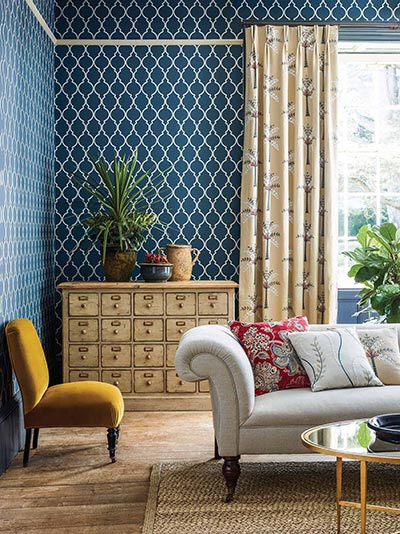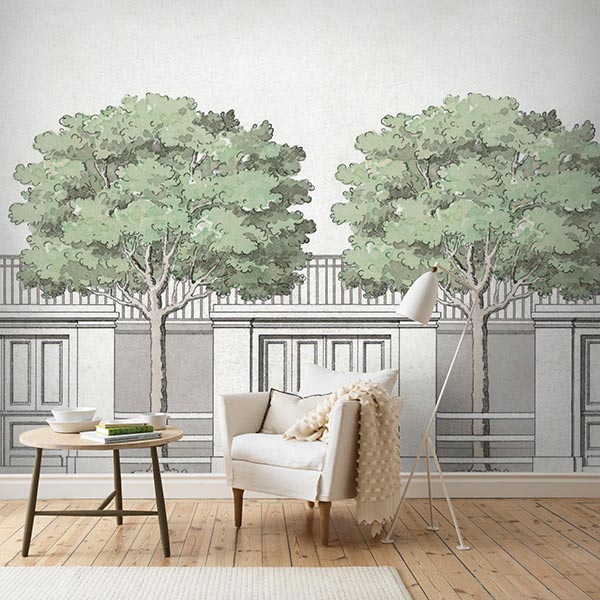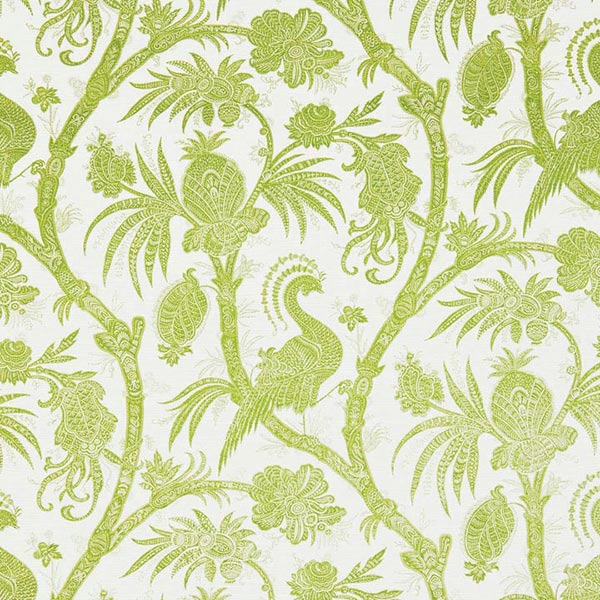
Makeover with wallpaper
Marine Orlova
Want to transform your home into a cosy space you can sink into after a hard day's work? Keep cool – and hang some gorgeous wallpaper.

Portobello (custom monochromatic design colours on Scarlet Lady dyed silk) from the Chinoiserie collection [Photo/De Gournay]
Want to transform your home into a cosy space you can sink into after a hard day's work? Keep cool – and hang some gorgeous wallpaper.
"Whatever you have in your rooms, think first of the walls; for they are that which makes your house and home; and if you don't make some sacrifice in their favour, you will find that your chambers have a kind of makeshift lodging appearance about them, however rich and handsome your movables may be," wrote William Morris, the famed 19th-century English textile designer. Indeed, walls immediately set the tone of an interior. Just as foundation make-up can change someone’s face, colours and patterns can give a completely new dynamic to a space. Furthermore, wallpaper says a lot about the homeowner's taste and character. Let's take a whirlwind tour of its tumultuous history and choose the one that will reveal your inner beauty.
The history of European wallpaper dates back in the 16th century, when the first domino papers – poster-size sheets of paper printed with wooden blocks and painted with stencils – were made. "They first represented religious images, such as biblical figures with the Latin invocation O domino written underneath," explains Véronique de la Hougue, chief curator of the wallpaper department at the French museum for Decorative Arts. "They were hung on walls like paintings. Secular images such as a garland of flowers, a fruit or a leaf appeared later at the end of the 17th century. These patterns were printed over several sheets of paper that had to be joined together – and this was the beginning of wallpaper."
These refined, fragile pieces of paper were used in small, intimate rooms such as a corridor, an alcove or a cabinet, while state rooms were still covered by large tapestries as they had been in the Middle Ages. Dominos also lined the insides of furniture, coffers, boxes and bound paperback books. In the 1750s, It girl Madame de Pompadour (Louis XV's favourite), who was a huge fan of wallpaper, fully adorned her dressing room in Versailles with these colourful papers. "Let's keep in mind that there was no electricity at that time, only natural light and candles," says de la Hougue. "If one shed a modern halogen light in an 18th-century interior, one would be really surprised by the bold terracottas, vivid greens and azure blues applied on the walls."
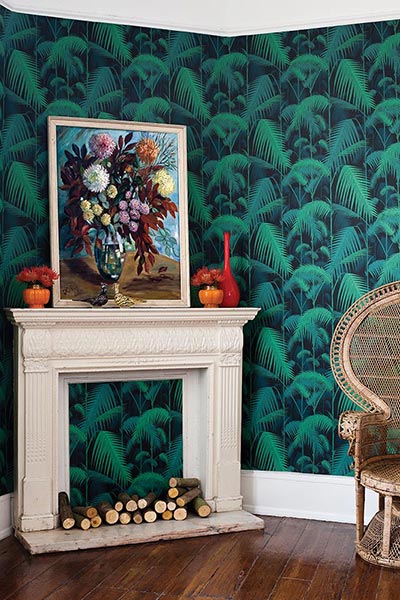
Wallpaper paternity is a European bone of contention. "If the French were very good at drawings and patterns, the Britons made the major technical breakthroughs," says de la Hougue. "At the beginning of the 18th century, the English invented a machine that could join up to 24 sheets together, which made printing easier. They also set the trend of flocked wallpapers, whose texture imitated cut velvet – they are still a staple in wallcovering." Can you imagine that the French even employed spies to uncover the secret of these trendy wallpapers?
Without a doubt, the 19th century was the golden age of wallpaper. The steam revolution, which allowed the printing of large quantities of paper faster and at a lower cost, made it affordable for working-class homes. "Wallpaper was then considered as a necessity, as vital as food and home," says de La Hougue. It was an economical, clean and stylish alternative to painting and fabric; moreover, it was an easy way to bring fashion and art into one’s house. Indeed, wallpapers were infused by contemporary artistic movements: arts-and-crafts flower patterns, jazz-age and cubic-style designs, psychedelic swirls in the '70s and so on.
Though wallpaper went out of style for a couple of decades, the world has seen an incredible revival over the last 10 years. Used as an ornament to create an accent wall or as a plain background to set a cosy atmosphere, wallpapers are truly everywhere.
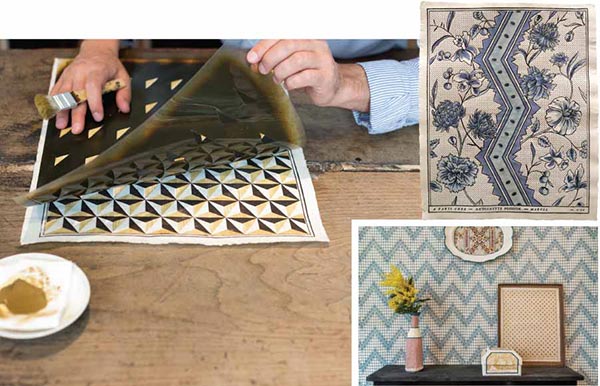
So what are the hottest trends? Nadine Tulloch-Osborne, a marketing executive for Cole & Son, answers: "Botanical patterns and textures of natural materials such as leather, wool and stone are desirable. African inspiration is also very strong nowadays. One wants their interior to bring a sense of reassuring warmth in the increasingly dominant age of the digital lifestyle."
De la Hougue also notes that digital printing allows the creation of extraordinary large-scale murals and ultimate sophisticated patterns: "Once again, a technological innovation makes wallpaper history move forward."
Now let's have fun and listen to William Morris's advice: yes, a roll of paper can make the entire difference. Why not be inspired by the 18th-century fad for exoticism and travel in your living room with a panoramic landscape? Or how about covering your ceiling with cloud, star or plane wallpapers? To find the right one for you, have a look at the collections of Cole & Son, Sanderson, Sandberg or Scalamandré, which provide vintage revival patterns as well as more sober modern ones. And for those who want to stick to the traditional handmade wallpaper, the unique dominos of Antoinette Poisson and the impressive hand-painted wallpapers of De Gournay will realise your dream of a perfect interior.
